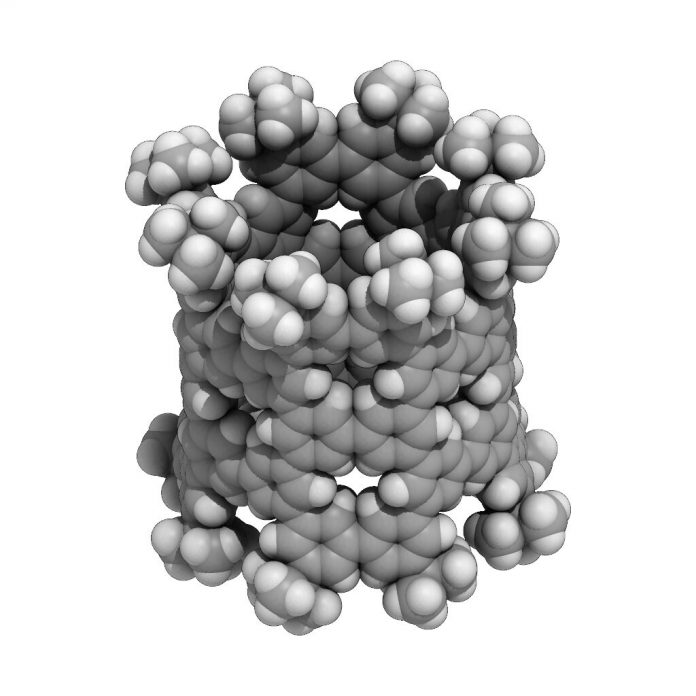Researchers from the Department of Chemistry of University of Tokyo’s Graduate School of Science have created a novel molecular nanotube which could lead to new nanocarbon based semi conductor applications. Professor Hiroyuki Isobe wanted a single type of nanotube, a novel form with controlled defects within its nanometer-sized cylindrical structure allowing for additional molecules to add properties and functions different from carbon nanotubes which vary in length and diameter.
The synthesis involves combining six benzenes to make a larger hexagonal ring called a cyclo-meta-phenylene (CMP). Four CMPs form an open ended tube using Platinum atoms. When the platinum is removed, the tube springs into a thick circle and this is furnished with bridging molecules on both ends, enabling the tube shape. This complex process successfully bonds the benzenes in the right way 90% of the times. The key also lies in the symmetry of the molecule, which simplifies the process of assembling as many as 40 benzenes. These benzenes, also called phenines, are used as panels to form the nanometer-sized cylinder. The result is a novel nanotube structure with intentional periodic defects. Theoretical investigations show these defects imbue the nanotube with semiconductor characters.

































